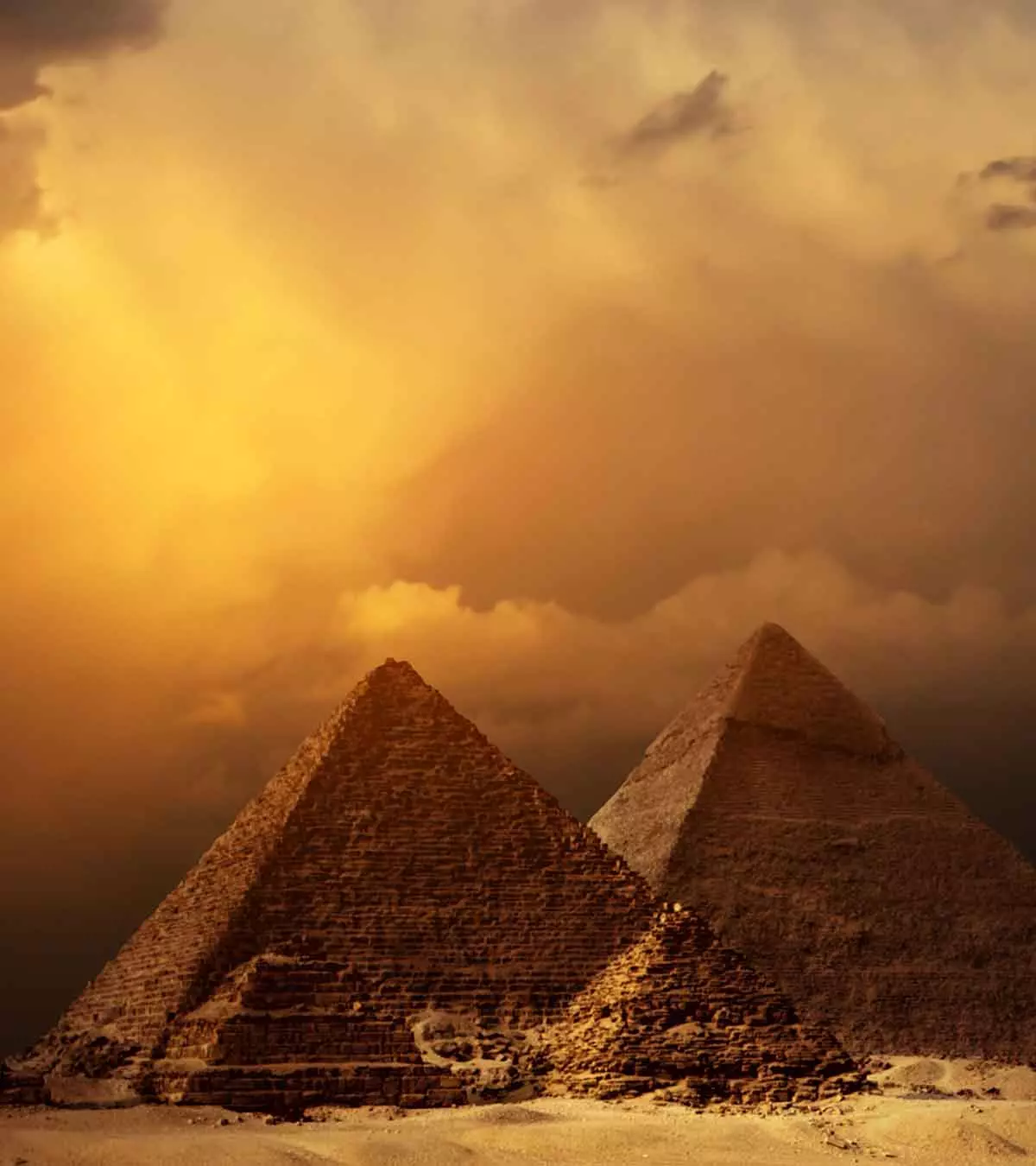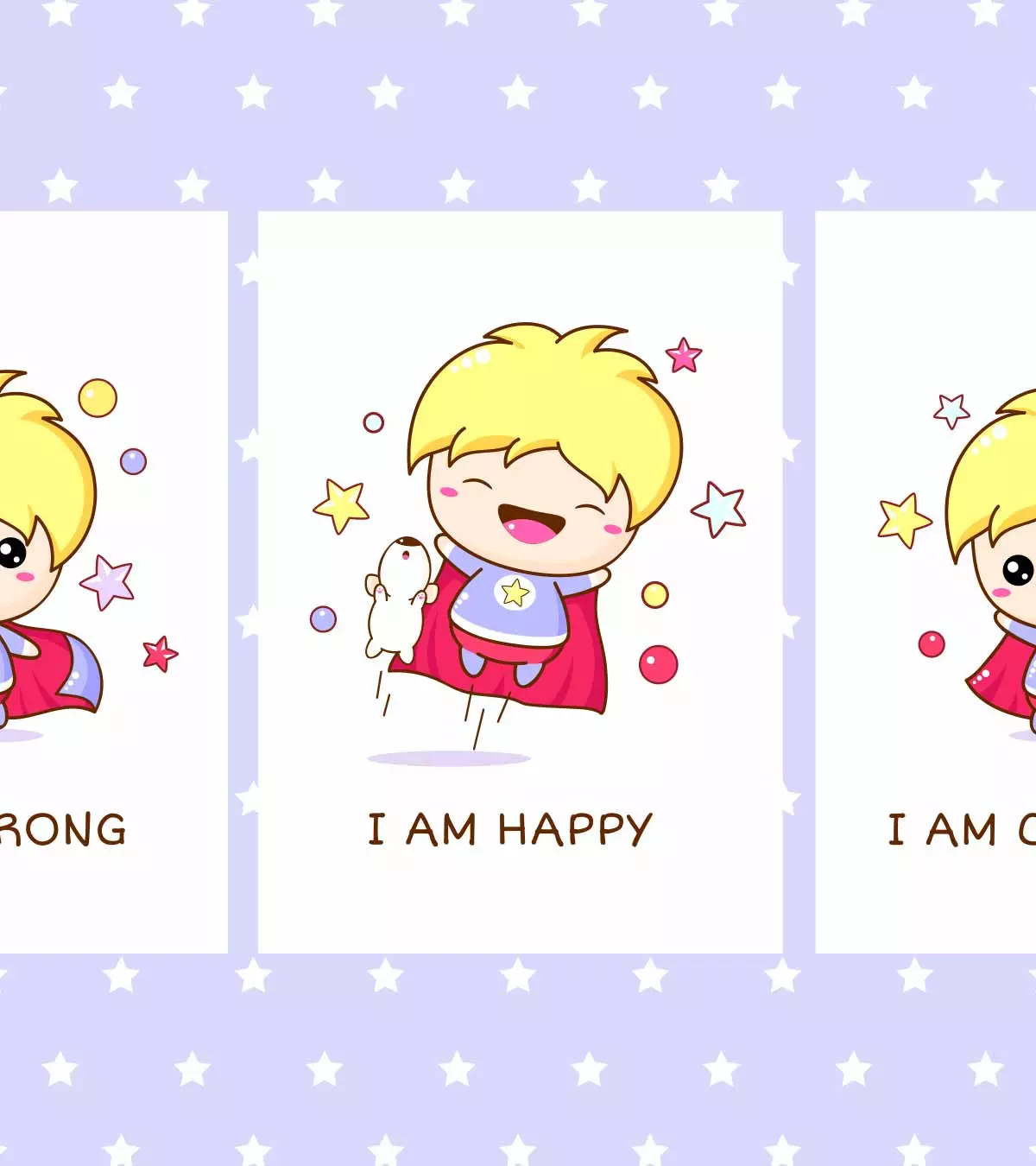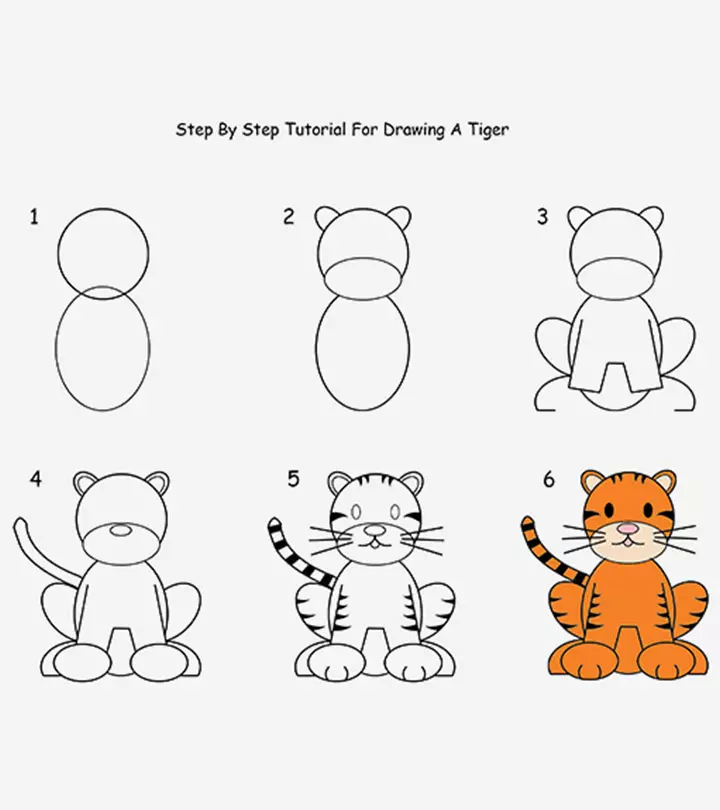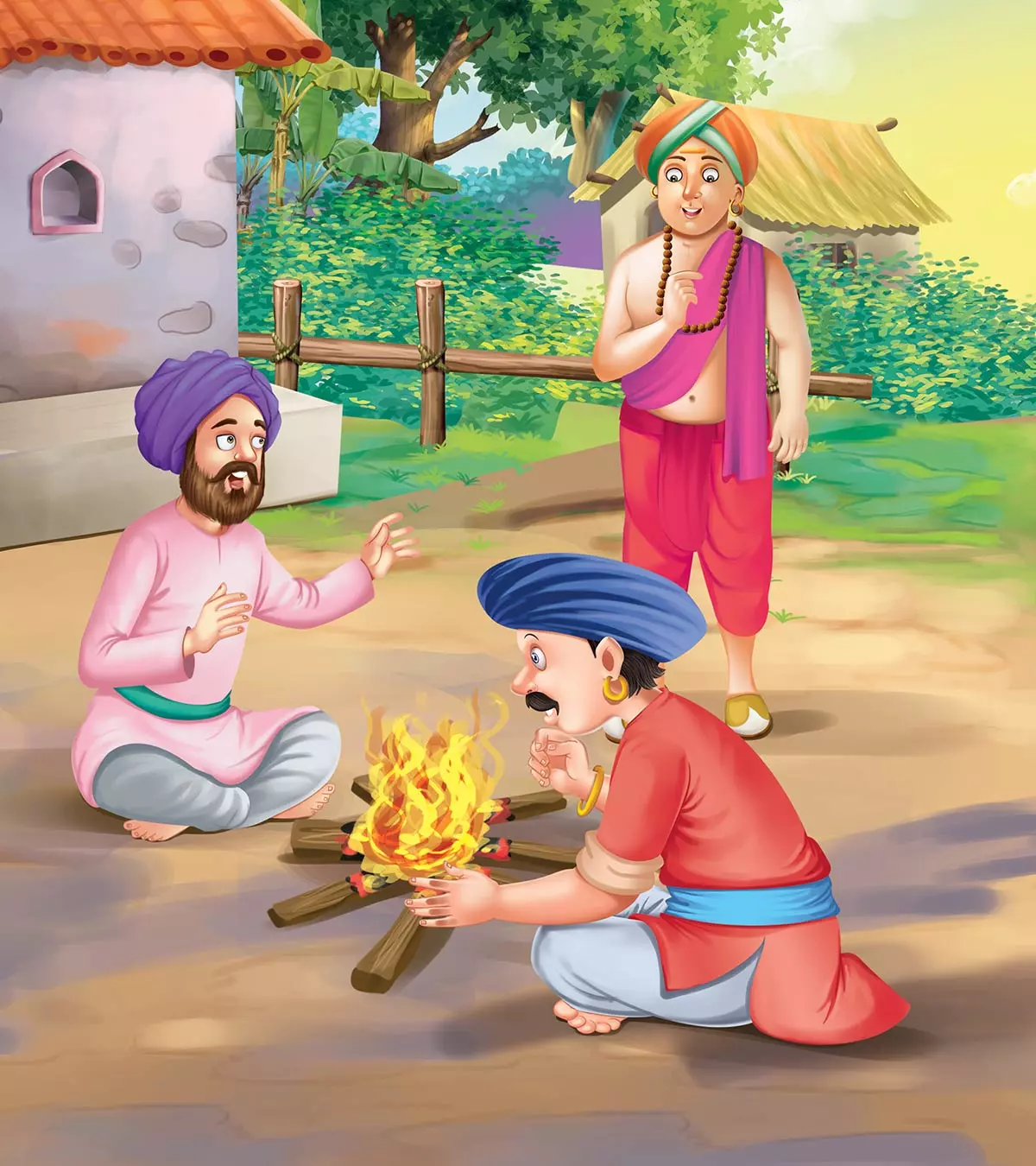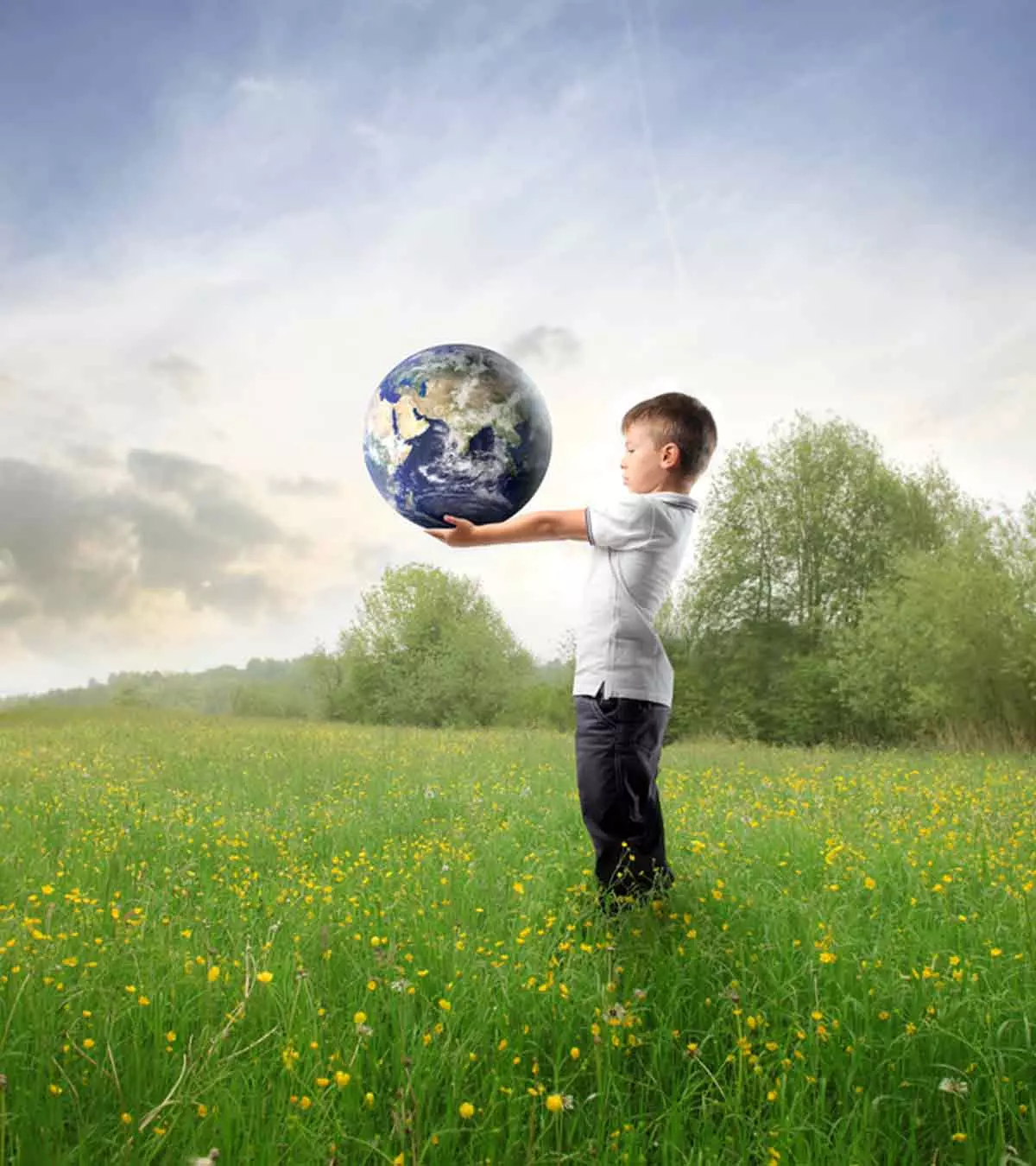
Image: Shutterstock
The planet Earth is located third from the Sun in the solar system. It is the densest planet in the Solar System and has a powerful magnetic field. If you are looking for facts about the Earth for kids, you are at the right place. The Earth is believed to be 4.5 billion years old (1). Interestingly, it is the only planet not named after a god. Also, the Earth is the only known planet that supports life, and about 70% of its surface is covered with water. This planet also has valleys, mountains, canyons, plains, rivers, and celestial landforms. Keep reading as we have combined some fascinating facts about Earth to help your children better understand the geography, environment, and nature of planet Earth and share them with their friends. These facts can spark children’s curiosity and encourage them to learn more about the wonders of Earth. Perhaps they can also help children develop a sense of responsibility and protection towards nature and strive to conserve the ecosystem.

Key Pointers
- In ancient times, many assumed our Earth to be the center of the universe, not the Sun.
- Earth also has a second moon.
- There is only 3% freshwater, the rest 97% is salty.
- We haven’t explored nearly 65% of the Earth. Read further for more such facts.
Information About The Earth For Kids
All the planets in our solar system, except Earth, are named after either a Greek or a Roman god. There are many assumptions behind the origin of the name Earth. One is that it could be a combination of old English and German words ’eor(th)e’ or ’ertha’ and ’erde’ respectively, meaning ‘ground.’ This name is believed to be around 1,000 years old (2).
In the olden days, astronomers believed that the Earth was at the center of the universe and that the Sun, the Moon, and other planets revolved around it. Until the 1500s, it was also believed that the Earth was stationary and never moved. It was the Polish mathematician and astronomer Nicolaus Copernicus who made the heliocentric model of the solar system with the Sun at the center and the Earth and other planets revolving around it (3).
Scientists believe that the Earth took form when its gravity started attracting dust and swirling gas. The Earth revolves around the Sun every 23.9 hours and completes encircling the Sun in 365.23 days. The Earth’s axis is tilted 23.4 degrees. This tilt is the reason behind the different seasons we experience in a year.
 Did you know?
Did you know?Surface And Structure Of The Earth
A terrestrial planet, the Earth comprises several layers. The uppermost rocky layer is known as its crust, followed by the mantle, the outer core, and the inner core (4). Each of the layers exhibits different chemical composition and physical state.
The composition of the outer crust is as follows (5):
- Oxygen 46%
- Silicon 27.7%
- Aluminum 8.1%
- Iron 5%
- Calcium 3.6%
Meanwhile, the central core of the Earth constitutes iron and nickel.

Radius, Volume, And Mass Of Earth
According to NASA,
- The Earth’s radius measures around 3,959 miles (6,371km), while its diameter is approximately 6.73 x 1011 cubic miles (1.083 x 1012km3).
- The Earth’s surface area measures 1.97 x 108 square miles (5.1 x 108km2) with a volume of 6.73 x 1011 cubic miles (1.083 x 1012km3).
- The Earth’s mass is 6.6 sextillion tons (5.9722 x 1024kg) (6).
50+ Earth Facts For kids
Earth is a fascinating planet full of hidden mysteries and secrets, and learning about it can be both fun and educational. The following are some fun facts about Earth that can help children better understand our home planet.
- The solar system consisting of the Sun, planets, including the Earth, moons, and other celestial bodies, is situated in what is known as the Milky Way.
- The distance between the Sun and the Earth is around 93 million miles (150 million kilometers).


- Along with the Moon, the Earth has two additional asteroids named 3753 Cruithne and 2002 AA29 locked into co-orbital orbits with it.
- Also known as the Earth’s second moon, 3753 Cruithne is only five kilometers across and follows an orbit similar to that of the Earth, around the Sun.
- Mount Everest stands at 29,028 feet above sea level, making it the highest mountain on Earth.
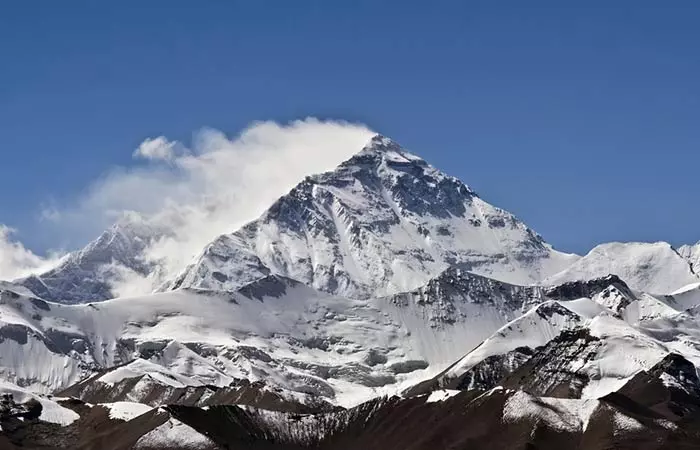
- The National Oceanic and Atmospheric Administration (NOAA) indicates that Mount Chimborazo in Ecuador is the highest point from the Earth’s center, as it is 6,800 feet farther into space compared to Mount Everest. This is because of its proximity to the equator, where the Earth’s bulge is the greatest.
- NOAA identifies Challenger Deep in the Mariana Trench in the western Pacific Ocean as the deepest point on Earth. It is as deep as 36,200ft below sea level.
- Mercury, Venus, Earth, and Mars are the four terrestrial planets in the Solar System. It means these are the only planets with a rocky surface.
- Earth is the fifth-largest planet in the Solar System and the largest one amongst the terrestrial planets.
- The Moon also witnesses ‘moonquakes’ similar to ‘earthquakes.’ However, the frequency and intensity of moonquakes are a lot less compared to earthquakes.
- Lut Desert in Iran is the ‘hottest spot’ on Earth. It recorded the highest surface temperature of 70.7°C in 2005 (8).
 Trivia
Trivia- Antarctica is the coldest place on Earth. The temperature in the continent can drop below -100 degrees F (minus 73 degrees C).
- Antarctica holds 70% of the freshwater on Earth and natural resources like geothermal energy, coal, and petroleum.
- Antarctica is considered one of the deserts because its interior regions receive only two inches (50 millimeters) of precipitation per year.
- The Hudson Bay of Canada exhibits lower gravity than other areas on Earth.
- The Pacific Ocean is so huge that all the continents of the world could fit into it (9).
- The Earth’s surface spins at around 1,000 miles per hour at the Equator.
- It is believed that, at one point in time, the Earth had two moons. The second moon must have likely collided with the existing moon, resulting in its decimation. This is also regarded as the possible reason why the two sides of the Moon differ in appearance.
- The Great Barrier Reef off the coast of Queensland, Australia, is Earth’s largest underwater habitat or structure. It is so prominent that some parts are visible even from space.
- The Dead Sea is located at the lowest point on Earth. The surface and shores of the salty lake are located 1,388ft (423m) below sea level.
- Lake Nyos and Lake Monoun in Cameroon and Lake Kivu in the Democratic Republic of Congo and Rwanda are three deadly lakes located above inactive volcanoes. The hot magma running below the surface releases carbon dioxide into the lakes. This carbon dioxide forms a thick layer over the lakebed. If released in an explosion, it can suffocate any person around it.
- Due to the impact of global warming and pollution, the Earth is experiencing a gradual loss of its freshwater sources, leading to rising global seawater levels. These factors may significantly harm ecosystems and their sustainability worldwide.
- In ancient times, the Earth was believed to be flat. However, the Greek philosopher Plato correctly indicated that the Earth was indeed a sphere.
- The inner core of the Earth is extremely hot, almost as hot as the surface of the Sun.
- When the oceanic plates come in contact with the continental plates, they are pushed downwards. This movement causes friction and pressure, which then causes molten rocks to move upward to the crust and erupt as ash and lava.
- The Earth’s atmosphere is a layer of gases. Since it is not in solid form, it fades away as it advances higher.
- By volume, the atmosphere comprises 78% nitrogen, 21% oxygen, 1% argon, and a mixture of other gases. The water vapor in the atmosphere is present below a height of about 8–15km (4.9–9mi).
- Earth has fewer craters compared to the other planets because it has volcanoes and witnesses earthquakes. These two natural phenomena affect the uneven surface of the Earth.
- One kilogram of Earth’s seawater can contain an average of around 35 grams of salt.
- If seven billion people on Earth jumped simultaneously, it could cause a 4 to 8 magnitude earthquake.
 Quick fact
Quick fact- Up to 1.3 million Earths can easily fit inside the Sun.
- The first images of Earth from space were captured by a motion picture camera installed in a German V-2 rocket on October 24, 1946.
- It takes eight minutes for the Sun’s rays to reach Earth.
- The planet Mars is half the size of the Earth.
- Neptune and Uranus are four times the size of the Earth.
- Planet Saturn’s diameter is 9.5 times that of the Earth’s diameter, while Jupiter’s is 11 times that of the Earth’s diameter.
- The Earth’s atmosphere can break meteoroids that advance toward the planet, thus protecting the surface from the final impact.
- Earth’s natural satellite, the Moon, is the fifth largest moon in the Solar System.
- The Moon’s structure is similar to that of the Earth’s with a crust followed by a mantle, an outer core, and a solid iron inner core.
- The Moon is locked tidally to Earth, and hence, we can only see one side of its surface from the Earth. It causes tides and can also cause other weather or climatic changes on Earth.
- Around 300 million years ago, the Earth had only one gigantic supercontinent called ‘Pangaea.’ The entire remaining water body was known as ‘Panthalassa.’
- Humans are yet to map around 80% of Earth’s oceans. This means that 65% of the Earth remains unexplored.
- The landforms of the Earth play a vital role in influencing weather patterns and geological events.
Frequently Asked Questions
1. What is another name for Earth’s surface?
The outermost layer of Earth’s surface is also called the planetary surface or crust. Also, the Earth’s surface is composed of a thick layer called the lithosphere, which includes the crust and the mantle (10).
2. How was the structure of the Earth discovered?
Scientists discovered the structure of Earth (internal structure) by using seismic waves (the P and S waves), the shock waves generated in response to earthquakes and explosions (11).
3. What is Earth’s nickname, and why?
Earth is also known as the blue planet since a significant part of Earth is covered in water (about 70%), and when viewed from space, the Earth appears blue (12).
4. What are some major ecosystems on Earth?
The Earth has several ecosystems, including forests, oceans, deserts, and grasslands. Every ecosystem supports different types of flora and fauna.
Our planet Earth holds many secrets that are yet to be discovered, and it never ceases to amaze us with its wonders and what it is capable of creating. In fact, it often makes us wonder how small and insignificant we are when compared to the Earth. Hence, the list of interesting facts about Earth may never end if we try to count the number of marvelous things on Earth. This list of fascinating facts about the Earth for kids can pique their interest in this beautiful and majestic planet we live on. The next logical step you could take is to introduce them to some facts about the solar system.
Infographic: Saving Our Planet
The health of our planet is constantly deteriorating due to increased deforestation and climate change. But it is not too late. Here is an infographic that helps you understand how everyday activities can impact conservation. So check it out and share it with others to raise awareness.
Some thing wrong with infographic shortcode. please verify shortcode syntax
Illustration: Interesting And Must-Know Facts About Earth For Kids

Image: Stable Diffusion/MomJunction Design Team
Join us on an enlightening journey about the diverse ecosystems, mindblowing geological phenomena, and other wonders of our home planet Earth in this engaging video.
References
1. The Solar System and its planets; European Space Agency
2. How did Earth get its name?; Cool Cosmos
3. Nicolaus Copernicus; Stanford Encyclopedia of Philosophy
4. Earth Structure; National Geographic Kids
5. Composition of the crust; Sandatlas
6. Earth; Nasa Science Solar System Exploration
7. The Composition Of The Interior Of The Earth; Physics Department, University Of Florida
8. Where Is the Hottest Place on Earth? It Lies Somewhere Between Folklore and Science, the Desert and the City; Earth Observatory
9. Top Ten Facts about the Pacific Ocean; Centre for Coastal Zone Management and Coastal Shelter Belt – Government of India
10. Lithosphere; National Geographic Society
11. Inge Lehmann: Discoverer of the Earth’s Inner Core; American Museum of Natural History
12. Mars compared to Earth; Science X Network.
13. 10 interesting things about Earth; NASA.
14. Planet Compare; NASA.
15. Cool Earthquake Facts; USGS.
Community Experiences
Join the conversation and become a part of our nurturing community! Share your stories, experiences, and insights to connect with fellow parents.
Read full bio of Theresa Bertuzzi
Read full bio of Sravani Rebbapragada
Read full bio of Harshita Makvana
Read full bio of Praggya Joshi







